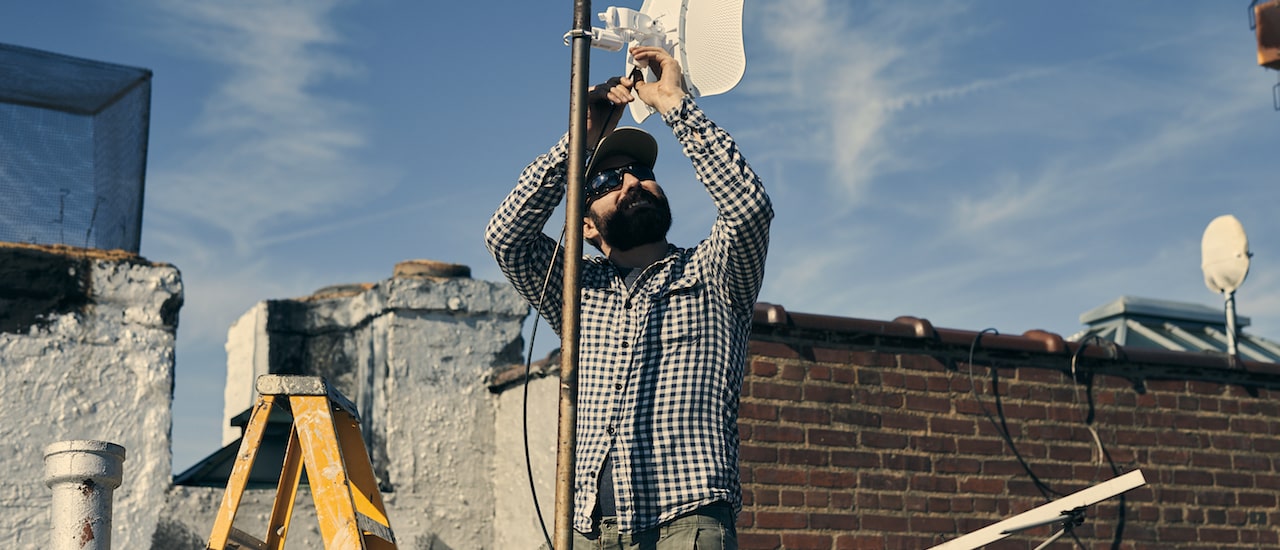Although the COVID-19 pandemic is, unfortunately, far from over, the Internet continues to be resilient, supporting the additional demands that we have placed on it, including the rapid growth in online learning, work videoconferences, e-commerce, streaming video entertainment, and more.
Because the Internet exists as a network of networks, this resilience is largely due to the planning, actions, and cooperation of all of the interconnected participants. These participants include, but are certainly not limited to, network providers, Internet Exchange Points (IXPs), and Content Delivery Networks (CDNs).
Expanding Infrastructure
On the network side, major providers such as Comcast have invested billions of dollars over the last several years in expanding fiber infrastructure and growing network capacity. In contrast, community network provider NYC Mesh is leveraging DIY customer installations to grow its own infrastructure during the pandemic. While there is still much work to be done, these efforts by both large and small network operators as well as similar operators all over the world, are making reliable broadband connectivity more widely available. Infrastructure expansion is vital as the current pandemic has shown that access to reliable Internet is now more important than ever before.
Fast and Reliable Content Delivery
CDN providers are also doing their part, delivering massive amounts of traffic from the edges of the Internet, reducing congestion across backbone links, and ensuring that websites, applications, and video content are delivered to end users quickly and reliably. Akamai noted in April that it had seen global Internet traffic increase by about 30% during the previous month, representing an entire year’s worth of growth in Internet traffic in just a few weeks. In June, Fastly announced that it had reached 100 Terabits per second (Tbps) of global capacity across its platform. It’s now clear that the services that CDNs provide will play an increasingly important role in enabling our growing reliance on the Internet in our daily lives.
Keeping Traffic Local
IXPs also help to keep traffic local, facilitating the exchange of traffic between regional networks and enabling those networks to connect to large content platforms like Facebook and Google. In the Asia Pacific region, IXPs saw traffic increase as much as 40% over the last several months. In Canada, one IXP offered free port upgrades to existing customers to help them add capacity to their networks quickly, while another offered free one-year memberships to public sector organizations within the country. Maine’s NNENIX reached new traffic peaks due to increased usage by participating networks, and can improve performance for customers of networks peering at the exchange.
Find Out More
On Thursday, July 16, I’ll be moderating a panel discussion on “Internet Resiliency During COVID-19” at the ThousandEyes State of the Internet virtual summit.
We’ll hear from panel participants Scott Rasmussen of NYC Mesh, a community network provider, Jana Iyengar of Fastly, a CDN platform, and Jim Troutman of NNENIX, an IXP.
Register now to join us and learn more about the traffic shifts that they observed on their networks and platforms, associated challenges and how they handled them, and how they are ensuring they remain resilient in this new normal.
To help everyone gain deeper insight into the Internet, we’re building a tool that consolidates trusted third-party Internet measurement data from various sources into a single platform. We’ll use this data to examine trends, generate reports, and tell data-driven stories. Find out more about the Measuring the Internet project.
Photo of October 2019 NYC Mesh installation ©Chris Gregory

